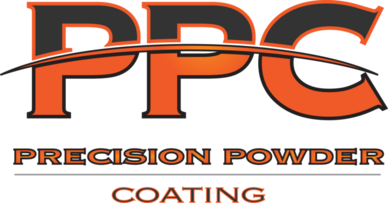Frequently Asked Questions About Our Services
We're happy to answer any questions you have but we thought we'd put the frequently asked questions up here to help you in deciding how you want to pursue your next project.
What Is Powder Coating?
The powder coating process uses a solvent free dry mix of plastic resins, pigments and fillers that melt and fuse together when heated. The solid particles of coating are electrostatically charged in a spray gun and carried by low velocity air to the surface of the piece to be coated. The electrostatic charge holds the powder particles in place while the part is cured in a 375-degree oven. The heat of the oven causes a chemical reaction to occur and the powder to cure.
Powder coating is a highly durable, decorative and long lasting finish applied to products of nearly every sort for the consumer and industry alike. It can come in virtually any color or finish, matte or smooth, is rust-free, scratch resistant and ecologically friendly.
Outdoor barbeques, swing sets, patio furniture and garden equipment are just a few examples of products that are powder coated. Though it appears painted on, it’s actually a dry finishing process. Electrostatically charged particles of pulverized pigment and resin are sprayed on to the surfaces of items that have been electrically grounded, thereby attracting the dry charged particles. Items are then placed in a curing oven where the powder coating melts and fuses to the surface. Not only is the process virtually pollution free, but there is also very little waste as the dry over-spray can be recovered. Also, the industry does not have to invest in costly pollution-control equipment, making powder coating extremely economical.
Resistant to chipping, and fading, colors of a powder coated item will remain true for many years. High gloss and low gloss finishes, even metallic and clear finishes, make it an ideal choice for stadium chairs, railings and structural enforcements, tools, engine parts, golf clubs, carts, ski poles, bindings, computer cases, farm equipment, exercise equipment, store racks, baby strollers, car wheels, motorcycle parts, and countless other products.
Since its introduction in North America almost 40 years ago, powder coating has become the fastest growing finishing technology, currently representing more than 15 percent of the total finishing market, according to the Powder Coating Institute (PCI).
More and more manufacturers for countless products have switched from liquid finishing to powder coating as a way to produce a high-quality and durable finish while maximizing production, cutting costs, improving efficiency, and complying with increasingly stringent environmental regulations.
What are the Advantages of Powder Coating?
Although a finish represents only one attribute of a coated part, it is the most visible and influential characteristic to the consumer. Powder coatings have a positive impact on the consumer, both directly and indirectly, and provide solutions to issues of public concern. Powder coatings have become the coating technology of choice for consumable goods from toolboxes, bicycles, office furniture, and lawn furniture to widespread markets such as appliance and automotive for the reasons listed below.
What’s the Quality of Powder Coating?
The unique rheological and application characteristics of powder coatings provide superior consistency and uniformity of finish without sags, drips, runs, or bubbles. They provide extremely tough, durable films, enhancing the high quality, value-added image of consumer products. In general, the performance properties, such as impact resistance, flexibility, and corrosion resistance, of powder coatings are better than with liquid paints. Powder coated parts resist cracking, peeling, and marring during handling and normal service use. In many cases, merchandise is specifically being advertised as “POWDER COATED” because of the quality image it projects.
